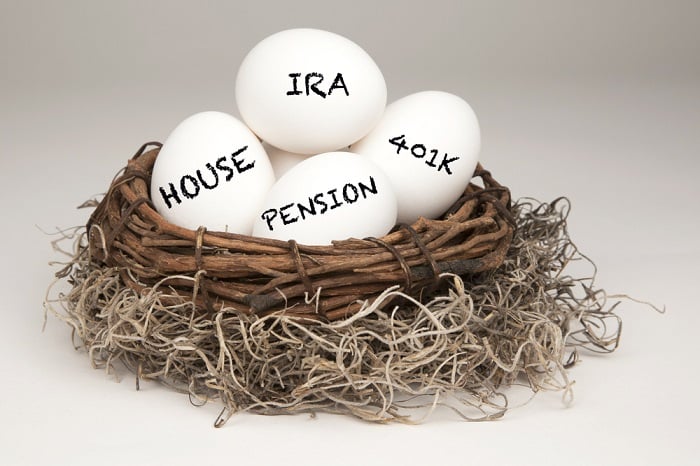 Fewer Americans have just a pension now, while the percentage of families that had just a DC plan in 1992 — 37.5 percent — soared to over 66 percent in 2016. (Photo: Shutterstock)
Fewer Americans have just a pension now, while the percentage of families that had just a DC plan in 1992 — 37.5 percent — soared to over 66 percent in 2016. (Photo: Shutterstock)
When it comes to retirement income sources, individual account retirement plans are the dominant source of financial assets for retirement income for both current and future retirees, and they continue to proliferate in the market.
Individual account retirement plans are employment-based defined contribution plans and individual retirement accounts, as opposed to defined benefit plans.
Recommended For You
A brief from the Employee Benefit Research Institute finds that, according to data from the Survey of Consumer Finances, 66.5 percent of all families that had an active participant in an employment-based retirement plan from a current employer had a DC plan only in 2016. And while 16.2 percent of these families had both a defined benefit and DC plan, 17.2 percent had a DB plan only.
There was a big shift from 1992 to 2016 among these families with an active participant. The percentage of families having just a defined benefit plan in 1992 fell from 40 percent to 2016's 17.2 percent, while the percentage of families that had just a DC plan in 1992—37.5 percent—soared to a bit above 66 percent in 2013 and 2016. And the percentage of families with both types of plans? That fell from 22.5 percent in 1992 to 16.2 percent in 2016.
More family heads who were eligible for DC plans and chose to participate increased from 2013′s 78.7 percent to 79.4 percent in 2016, as did the percentage of families owning IRAs or Keogh plans—from 26.1 percent in 1992 and 28.1 percent in 2013 to 29.9 percent in 2016.
And while the percentage of families with an IA retirement plan from a current or previous employer or an IRA/Keogh plan was 52.1 percent in 2016, the biggest change in this percentage of families was among those with the oldest heads of household (age 75 or older); among this group, the 2013 percentage of 29.0 rose to 40.9 percent in 2016. Also, the average account balance in those IA plans rose from $75,300 in 1992 and $208,639 in 2013 to $232,502 in 2016.
As DC plans have risen in the private sector, the brief adds, IA plan assets have become the chief source of financial assets for American families holding those assets, making up a median of 67.9 percent of assets for those families in 2016—and that median is 3.7 percentage points higher than the median in 2007, and 23.6 percentage points higher than in 1992.
And while regular IRAs accounted for the largest percentage of IRA ownership, rollover IRAs had the largest share of IRA assets in 2016.
The brief points out that "[n]ot only do IA assets make up a large portion of families' financial assets, but those with IA assets also have substantially higher levels of net worth than those families without IA assets. The median net worth for families that owned IA assets was $249,950 in 2016 compared with $19,200 for families without IA assets."
Considering how dependent people have become on IA plans, it concludes, "any policy that alters this system could have consequences—either positive or negative—for Americans' ability to fund a comfortable retirement."
© 2025 ALM Global, LLC, All Rights Reserved. Request academic re-use from www.copyright.com. All other uses, submit a request to [email protected]. For more information visit Asset & Logo Licensing.







